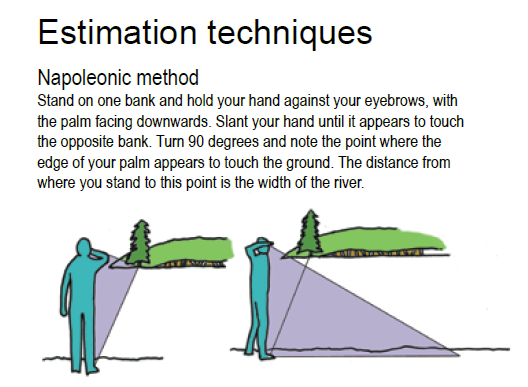I like this. Anyone got any more like it? I know there's a way to estimate the height of a tree/building without any gadgets....
Z
You can do all sorts of things like this with a bit of string and a plastic ruler.
The ancients called it a
kamal. It was used in navigation, but it can be used in many settings.
Basically a 'modern' kamal is a bit of string with a ruler graduated in milliimetres at one end and a knot at the other end. There's 573mm of string between the knot and the ruler.
The fundamental principle is that you can very easily both measure small angles and make accurate approximations with them.
A lot of calculations involve the 'sine' of an angle.
If you're talking about a right-angled triangle, the sine of the angle between the hypotenuse (longest side) of the trangle and the other side which is adjacent to it is the ratio of the other side to the hypotenuse.
But don't panic, now it gets easy.
For small angles, the sine of the angle is approximately equal to the angle itself, which means you can eliminate some of the calculations if you know what you're doing.
The kamal lets you measure small angles directly, just by holding the knot in the bit of string in your teeth, pulling the string taught and looking past the ruler at the thing you're measuring.
For the purpose of the calculations the angles we're measuring here are expressed in radians, not in degrees. But they're the same angles.
So for the OP's problem, you only need one stake, no rope, and a kamal. You don't have to get your feet wet.
Drive the stake into the bank opposite the tree.
Walk a known distance away from both the stake and the tree - it doesn't really matter how far, but far enough so that the angle you're measuring is just a few degrees.
Measure the angle between the tree and the stake using the kamal - let's say it's 57.3mm on the ruler, or (57.3/573) = 0.1 radians.
If you walked about 500m away from the stake and the tree, they're about 500 x sin(0.1) m away from each other.
But since 0.1 is a small angle, sin(0.1) is approximately (to better than 0.2% in fact) equal to 0.1, so the tree is 500 x 0.1 = 50m from the stake.
I love geometry.


